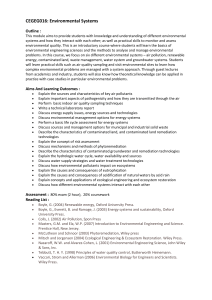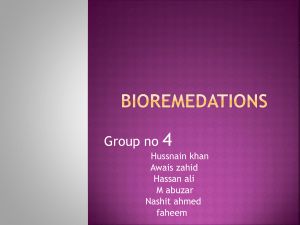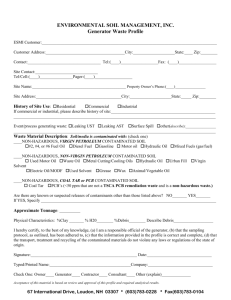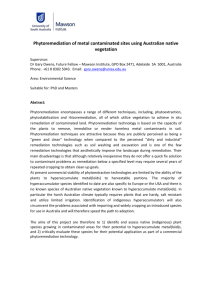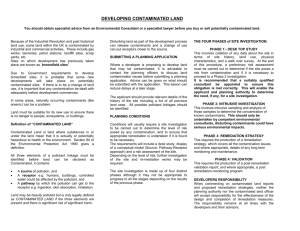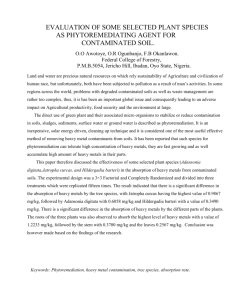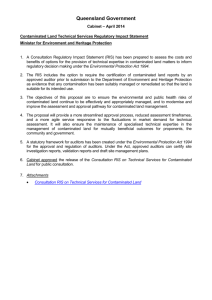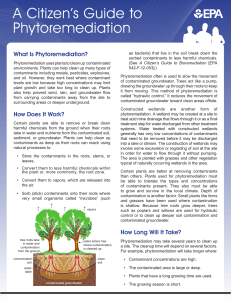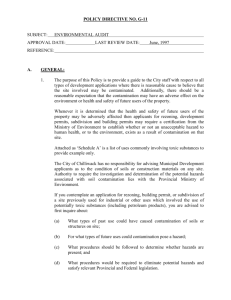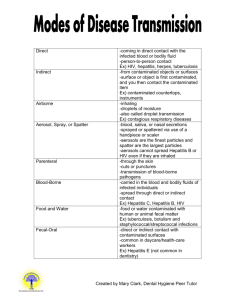PlantsVsPollutants Letter 1
advertisement
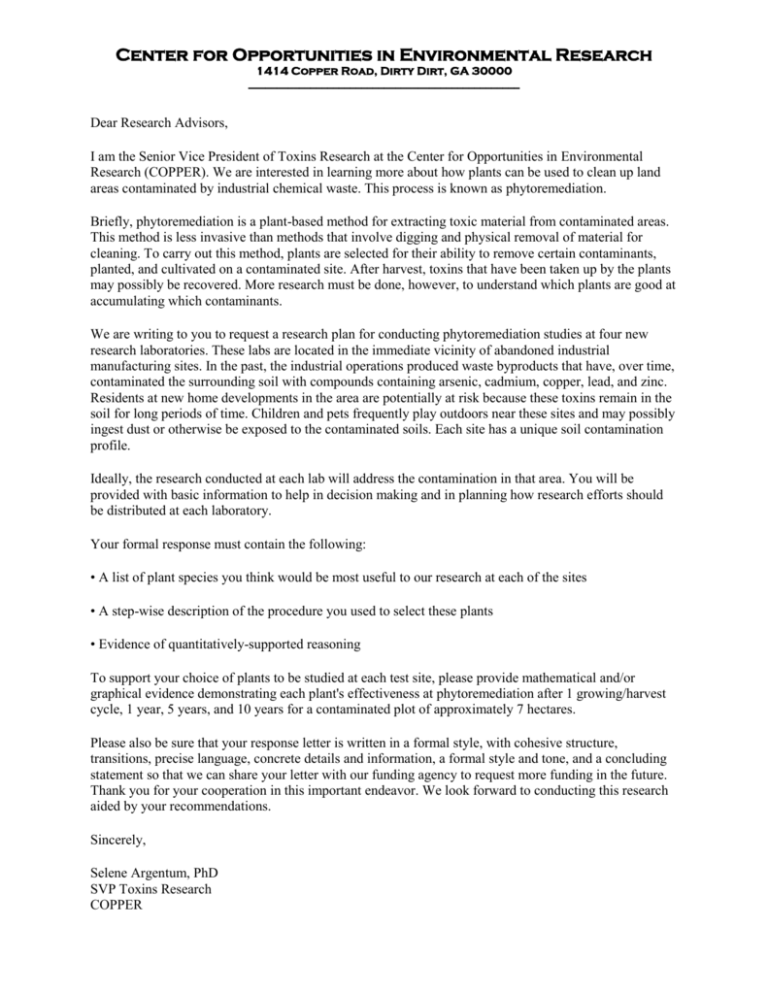
Center for Opportunities in Environmental Research 1414 Copper Road, Dirty Dirt, GA 30000 ________________________________________________ Dear Research Advisors, I am the Senior Vice President of Toxins Research at the Center for Opportunities in Environmental Research (COPPER). We are interested in learning more about how plants can be used to clean up land areas contaminated by industrial chemical waste. This process is known as phytoremediation. Briefly, phytoremediation is a plant-based method for extracting toxic material from contaminated areas. This method is less invasive than methods that involve digging and physical removal of material for cleaning. To carry out this method, plants are selected for their ability to remove certain contaminants, planted, and cultivated on a contaminated site. After harvest, toxins that have been taken up by the plants may possibly be recovered. More research must be done, however, to understand which plants are good at accumulating which contaminants. We are writing to you to request a research plan for conducting phytoremediation studies at four new research laboratories. These labs are located in the immediate vicinity of abandoned industrial manufacturing sites. In the past, the industrial operations produced waste byproducts that have, over time, contaminated the surrounding soil with compounds containing arsenic, cadmium, copper, lead, and zinc. Residents at new home developments in the area are potentially at risk because these toxins remain in the soil for long periods of time. Children and pets frequently play outdoors near these sites and may possibly ingest dust or otherwise be exposed to the contaminated soils. Each site has a unique soil contamination profile. Ideally, the research conducted at each lab will address the contamination in that area. You will be provided with basic information to help in decision making and in planning how research efforts should be distributed at each laboratory. Your formal response must contain the following: • A list of plant species you think would be most useful to our research at each of the sites • A step-wise description of the procedure you used to select these plants • Evidence of quantitatively-supported reasoning To support your choice of plants to be studied at each test site, please provide mathematical and/or graphical evidence demonstrating each plant's effectiveness at phytoremediation after 1 growing/harvest cycle, 1 year, 5 years, and 10 years for a contaminated plot of approximately 7 hectares. Please also be sure that your response letter is written in a formal style, with cohesive structure, transitions, precise language, concrete details and information, a formal style and tone, and a concluding statement so that we can share your letter with our funding agency to request more funding in the future. Thank you for your cooperation in this important endeavor. We look forward to conducting this research aided by your recommendations. Sincerely, Selene Argentum, PhD SVP Toxins Research COPPER
